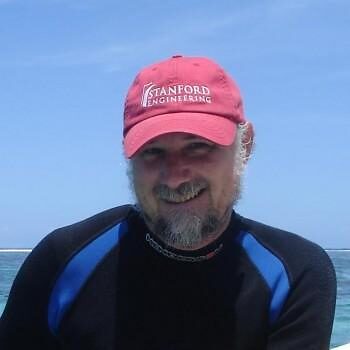Coastal flows with living roughness

Date
Location
Description
Marine Biophysics Unit (Mitarai unit) would like to invite you to seminar by Prof. Stephen Monismith from Stanford University.
Speaker: Prof. Stephen Monismith
Civil and Environmental Engineering
Stanford University
https://profiles.stanford.edu/stephen-monismith
Biography
Stephen Monismith, the Obyashi Professor in the School of Enginerring at Stanford University, received all his degrees from UC Berkeley Civil Engineering, completing his PhD thesis with the late Prof. H.B. Fischer. Following completion of his thesis, Stephen did a postdoc in Western Australia working with Jorg Imberger focusing on the fluid mechanics of stratified flows in lakes. He has been at Stanford in the Dept of Civil and Environmental Engineering since 1987, has been the director of the Environmental Fluid Mechanics Laboratory at Stanford since 1996, and was department chair between 2009 and 2016. His research uses field, lab, and computational experiments to look at estuarine and lake physics as well as nearshore flows with waves and stratification, focusing on mixing and transport processes that are central to ecology, biogeochemistry and environmental management. Through his work on estuarine dynamics, he has been active in San Francisco Bay-Delta issues, including helping to develop the scientific underpinnings of freshwater flow regulations. In recent years, much of his efforts (and travel) have focused on the physics of coral reef flows, with fieldwork and modeling carried out on reefs in the Red Sea, and in nearshore waters of Hawaii, Moorea, Palmyra Atoll, American Samoa, and Palau. He has parallel interests studying the inner shelf flows found near and inside the kelp forests of California.
Abstract
Kelp forests, seagrass beds, and coral reefs are among the most productive, biodiverse, and beautiful of marine ecosystems. Hydrodynamics plays a central role in their function, controlling mass transfer between the organisms and the overlying flow, setting patterns and rates of transport of larvae, and affecting the extent to which the environment (temperature, pH,…) of the system of interest is different from that of the adjacent ocean. Central to this interplay of physics and ecology is the fact that the resistance to flow provided by kelp plants, seagrasses, or corals is determined by the geometry and density of these “ecosystem architects”, behavior that is described by the dynamics of complex, canopy flows. I will present field observations of these flows drawn from a coral reef in American Samoa, a seagrass bed in Palau, and a kelp forest in Baja. In the first case, drag can be related explicitly to the reef geometry at cm scales. In the second case, drag varies strongly with velocity reflecting the re-configuration of the drag elements due to bending. In the final case, I will show how a set of velocity measurements taken over the span of several years in which the condition of the kelp forest varied between non-existant and dense, can be used to infer the way kelp drag depends on kelp biomass density.
Intra-Group Category
Subscribe to the OIST Calendar: Right-click to download, then open in your calendar application.



